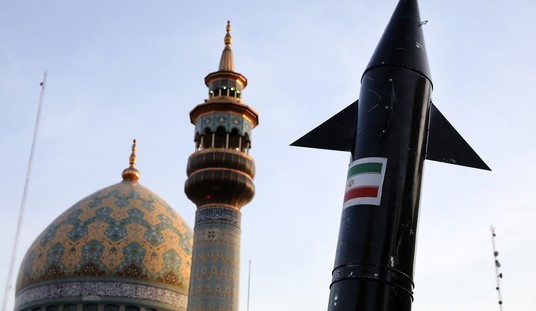The most likely detonator for major conflict with China is Taiwan. Hong Kong cannot be viably contested. India can defend itself. Beijing would be foolish to rerun the Korean war. That leaves Taiwan. If Taiwan declares independence it might be enough to light the fuse because China has long declared that any such efforts would be met by force.
The question arises: what if Beijing’s actions in Hong Kong precipitates a rush to Taiwanese independence? “Taiwan has moved to assure Hongkongers of “proactive rescue and possibly residency’ to help them through the precarious time facing their city.” This must rankle in Beijing. But that will only move the locus of anti CCP resistance to Taiwan as Britain became the haven of defeated continental Europeans after Dunkirk. If the battle of Hong Kong ends the battle — kinetic or otherwise — for Taiwan will begin.
Before the pandemic Taiwan had little prospect of international support for independence. China was then the linchpin of globalism. There was too much for the rest of the world to lose by crossing Beijing. The virus changed all that. What everyone feared to lose has already been lost. In addition the Chinese Communist Party’s behavior has become a major political liability in Western capitals, and as the surprising support for a virus origin inquiry shows, even in non-Western capitals.
The changed atmosphere means that for the first time in decades Taiwan has a real opportunity to gain independence. The tides of history constantly shift. For some years they were flowing Beijing’s way. Now they have turned. For both sides it’s — perhaps — now or never.
There is an opposite factor at work in the Taiwanese equation. Their principal shield against invasion used to be Beijijng’s massive world trade along the China coast. “More than half of the world’s annual merchant fleet tonnage passes through the Strait of Malacca, Sunda Strait, and Lombok Strait, with the majority continuing on into the South China Sea. Tanker traffic through the Strait of Malacca leading into the South China Sea is more than three times greater than Suez Canal traffic, and well over five times more than the Panama Canal.”
This shipping stream was too valuable to disrupt in the days before the pandemic. The slump in trade caused by the pandemic has thinned Taiwan’s shipping shield. The trends that strengthen Taiwan’s diplomatic case for independence have weakened it’s naval position.
The most important aspect of this game is the critical first move is not Washington’s. The West cannot send troops to Hong Kong. China can. The West cannot invade China. China might invade Taiwan; Taiwan might declare independence. The US is reduced to a second mover.
Nevertheless China is unlikely to invade Taiwan in the early stages of any campaign. As a RAND study suggests, a multidivisional landing on Taiwan by Beijing is probably doomed until most of the defenses are beaten down. The Pentagon thinks China has nowhere near the resources to mount a major amphibious assault on Taiwan. They note that instead of amphibians Beijing is building a battlefleet.
“There is also no indication China is significantly expanding its landing ship force at this time – suggesting a direct beach-assault operation requiring extensive lift is less likely in planning,” the report states.
Instead, China’s recent spate of military exercises and the PLA Navy’s focus on building large aircraft carriers, escort cruisers and amphibious transport dock (LPD) ships suggest the military, for now, is geared toward blue water naval operations and smaller expeditionary missions.
This turn away mirrors the USMC’s own thinking about the declining practicability of Iwo Jima style landing operations in the 21st century. “Between ASCMs, ASBMs, submarines, and modern surveillance capabilities, the weapon engagement zone that amphibious assault ships would have to transit in order to be in a position to launch their smaller landing craft is being pushed out hundreds of nautical miles and beyond. That is simply too big of a vulnerability to accept.” It is far more likely that China, instead of attempting a landing, will either try to attain blue water supremacy (to solve the problem of a USN blockade across the Pacific and Indian oceans) or stifle Taiwan with mines.
In mid-2018, the Chinese navy conducted one of the largest mine warfare exercises in living memory, involving some 60 minelayers and minesweepers, aircraft and submarines practising laying and countering live mines. This unprecedented exercise, supported by some of China’s top scientists and mine development specialists, increased the already growing unease about China’s expansion into the South China Sea.
Some 10 years ago, a US Naval War College study revealed that China possessed over 100,000 sea mines, and that their use was fundamental to its strategy of constraining US naval forces operating in Beijing’s area of interest. While, at the time, most strategists saw this as a direct reference to the Taiwan Strait and North Korea, that’s no longer so.
Taiwan can be invaded only after the USN and JMSDF are beaten or deterred.The trouble is any attempt by China to quell Taipei by such means risking a global conflict start because there is little chance of limiting the issue to a localized invasion across the Taiwan strait. Naval war ultimately aims for control of the seas and is hard to limit. The fact has been acknowledged by some analysts. An article in the Naval War College Review notes Beijing may see it as an all or nothing affair.
The PLA’s unmatched conventional ballistic-missile arsenal and rapidly evolving military capabilities, combined with a perception of relative invulnerability to U.S. retaliatory strikes, could lure Chinese leaders into a belief that a conventional first strike might deliver temporary PLA regional superiority, during which time Chinese leaders could settle regional disputes coercively, on their terms.
Instead of a doomed attack across the straits a first strike could probably be directed at Guam and Japan with incalculable results. As Pearl Harbor, the Korean War, the Fall of the Soviet Union, 9/11 and the Coronavirus showed, Washington and the media rarely anticipate a crisis. The Pacific Rim bears watching even as America is transfixed by its domestic troubles.
Follow Wretchard on Twitter or visit Wretchard.com
Support the Belmont Club by purchasing from Amazon through the links below.
Books:
God and Stephen Hawking: Whose Design is it Anyway?, by John C. Lennox. Oxford mathematician and author of God’s Undertaker, Lennox takes a closer look at Stephen Hawking’s logic in his book The Grand Design. In lively layman’s terms, he guides the reader through the key points in Hawking’s arguments – with clear explanations of the latest scientific and philosophical methods and theories – and demonstrates that far from disproving a Creator God, they make his existence seem all the more probable.
The Ghosts of Cannae: Hannibal and the Darkest Hour of the Roman Republic, by Robert L. O’Connell. For millennia, Carthage’s triumph over Rome at Cannae in 216 B.C. has inspired reverence and awe. No general since has matched Hannibal’s most unexpected, innovative, and brutal military victory. Piecing together decayed shreds of ancient reportage, O’Connell tells the whole story of this apocalyptic battle for the first time, its causes and consequences, its leading players Hannibal and Scipio Africanus, and reveals the lessons it teaches for our own wars.
The Disappearing People: The Tragic Fate of Christians in the Middle East, by Stephen M. Rasche. Today, Christianity stands on the brink of extinction in much of the Middle East, the land of its birth. How did this happen? What role did Western foreign policy and international aid policy play? What of the role of Islam and the Christians themselves? How should history judge what happened to Christians of the Mideast and what lessons can be learned? This book, published in March this year, examines these questions based on the first-hand accounts of those who are living it.
For a list of books most frequently purchased by readers, visit my homepage.
Did you know that you can purchase some of these books and pamphlets by Richard Fernandez and share them with your friends? They will receive a link in their email and it will automatically give them access to a Kindle reader on their smartphone, computer or even as a web-readable document.
Open Curtains by George Spix and Richard Fernandez. Technology represents both unlimited promise and menace. Which transpires depends on whether people can claim ownership over their knowledge or whether human informational capital continues to suffer the Tragedy of the Commons.
The War of the Words, Understanding the crisis of the early 21st century in terms of information corruption in the financial, security and political spheres
Rebranding Christianity, or why the truth shall make you free
The Three Conjectures, reflections on terrorism and the nuclear age
Storming the Castle, why government should get small
No Way In at Amazon Kindle. Fiction. A flight into peril, flashbacks to underground action.
Storm Over the South China Sea, how China is restarting history in the Pacific.









Join the conversation as a VIP Member